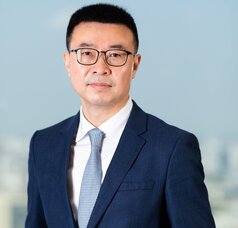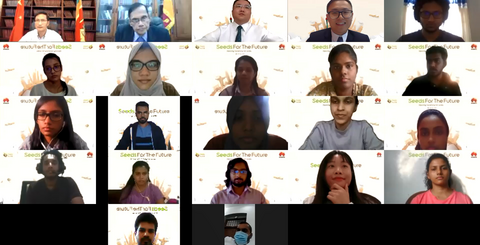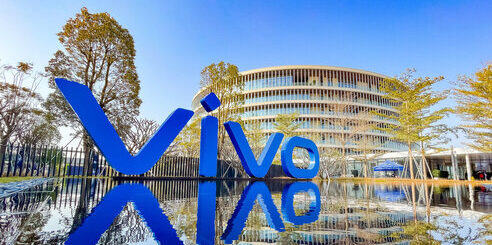`Building a Sustainable, Digital Business

By Simon Lin,President of Huawei Asia Pacific
Asia-Pacific is ripe with opportunities for digital transformation, and the pandemic has accelerated it. According to the Asian Economic Integration Report 2021, Asia Pacific would reap an economic dividend of more than $1.7 trillion yearly or more than $8.6 trillion to 2025. The increased use of digital technologies will result in about 65 million new jobs created yearly in the region until 2025.
With stable human, financial and business fundamentals, the highest net profit in history, and our continued efforts to globalize under pressure and increase R&D investment, Huawei’s unwavering business strategy, focused on connectivity and computing and rapidly developing new businesses including digital power and cloud, is perfectly aligned to drive the digital economy in Asia Pacific.
Leveraging Key Digital Trends
As we shift gears from COVID 19 being a great disruptor to focusing on new opportunities for digital transformation, I’m re-energized with the possibilities for our digital future. In 2022, our Huawei vision and mission continues, that is to bring digital to every person, home and organization for a fully connected, intelligent world. This year with Mobile World Congress 2022 now behind us, I can think of no better opportunity to re-emphasis this vision and extend it to our view for the future world of 2030.
Looking at the future world in 2030, Huawei is predicting various indicators across 4 broad areas that include Digital Life, Digital Industries, Digital Infrastructure and Digital Carriers.
For Digital Life, new XR and enhanced multimedia experiences will scale to 1 billion users and offer immervice solutions that will redefine everything from museum visits to shopping. Combining the data requirement for this with Digital Industry will mean the amount of data generated worldwide each year will likely exceed one trillion gigabytes and cloud services will account for more than 87% of enterprise application spending.
Digital Infrastructure will improve energy conservation and emission reduction with renewable energy accounting for 42% of the industry’s electricity generation. ICT technologies, while consuming only 2% of global energy, will help reduce CO2 emissions by 20%.
Underpinning all this will be Digital Carriers, supporting more than 200 billion connections and providing more computing and storage capabilities to Industries.
The Intelligent World will redefine experiences, optimize operations, and ignite new business. Embracing business, technology and sustainability we hope to work together with customers, partners, governments, industry and consumers to enrich lives through this new digital future.
Driving Innovation in Digital Infrastructure
Fundamentally, our future world will be based on 3 driving forces: business, technology and sustainability. First, business-driven forces will arise from the application of digital technologies in various industries to drive digitalization and improve services.
Second, technology-driven forces will emerge from new connectivity including 5G Advanced, 6G and IPv6+ and computing technologies that are evolving to enable new applications.
Lastly, sustainability-driven forces including green development, social responsibility, and fast response to emergency situations will profoundly change people’s lives.
Connectivity and cloud are the lifeblood of the digital frontier; however, the digital readiness of the region varies greatly. Huawei’s Global Connectivity Index (GCI) shows that India, Indonesia and Philippines ranked 63, 58 and 59 respectively out of all countries, while Singapore ranked No.2. Philippines and Indonesia are the lowest in fixed broadband speeds compared to Singapore, and Thailand at the front. More broadly, cloud penetration in the region is less than 20%, 4G mobile coverage is slightly above half, and FBB reaches barely one third of households.
Under our Tech4All initiative, for example, Huawei’s RuralStar program, with the aim to provide Internet and connectivity for underdeveloped regions since 2017, has successfully cooperated with 12 operators in 8 countries, including Thailand and Indonesia, in its first year.
In the remote mountains of Chiang Mai, Thailand, for example, Huawei’s AirPON solution reuses existing poles and fiber resources, creating an “air network equipment room” that has provided connectivity to more than 10,000 villages.
As part of its efforts to create a greener and more sustainable digital world, Huawei will increase its investment in sustainable green solutions, electric transportation, and smart energy storage, to support the Asia Pacific region’s goals of cutting carbon emissions, and contributing to a circular economy.
Lighting Up Asia Pacific
As one of the most populous and diverse regions in the world, Asia Pacific is set as the top fast growing economy group to the forefront of the global digital landscape. We have been seeing many countries in the region have released their national digitalization strategies.
For example, Singapore released its Smart Nation 2025 blueprint. Indonesia and Malaysia released strategies to go digital, Bangladesh has released its strategy called Digital Bangladesh, and Thailand announced its vision to become a digital hub in ASEAN.
In this great journey, we are committed to supporting the region’s digital vision as a key contributor. Towards this goal, we will focus on three key areas: Connectivity and Intelligence, Low-Carbon Development, and Digital Inclusion initiatives.
Digital Connectivity, including 4G, 5G, fiber and IoT is fundamental to the success of the digital economy and has been further accelerated by COVID-19 with the demand from digital subscribers and for digital services growing significantly. Huawei definitely plays a leading role in this area, not only in product and solution, but in fundamental theory research and industrial design as well.
Cloud Computing and Intelligence is the cloud Infrastructure for an intelligent Asia Pacific, including data centers, cloud services and AI enablement to support data monetization and promote industry digitalization. According to Gartner’s latest report, HUAWEI CLOUD was the fastest growing cloud in the global IaaS market with a growth rate of more than 220%. In Asia Pacific, we operate 7 Availability Zones in Thailand, Hong Kong, and Singapore and have local service teams in over 10 countries.
Through heavy R&D investment, the carbon emission for our E2E products and services has been reduced by over 80% for the same capacity. Huawei combines digital and electronic technologies to develop innovative digital power services and minimize the carbon footprint of ICT infrastructure. By the end of 2021, Huawei will have helped global customers reduce carbon emissions by 230 million tons and in Singapore, we supported Sunseap Group with industry-leading solar inverters to build one of the world’s largest offshore floating farms, contributing to the clean energy landscape in Asia Pacific.
Lastly, we will keep driving digital innovation for an inclusive Asia Pacific and leave no one behind. In our vision, a digital world is not just about technology, it is about people and humanity. Over the next 3 years Huawei will invest US$100 million to build the startup ecosystem in Asia Pacific, and over the next 5 years, we will invest US$50 million to develop 500,000 digital talents. In Malaysia, we launched our TECH4ALL initiative to help bridge the digital divide and with our Huawei IdeaHub smart screen, we have connected students in remote areas to digital interactive learning centers.
Huawei’s Outlook
Huawei’s business strategy is clear, focusing on connectivity and computing, and developing new businesses that include digital energy and cloud.
Huawei’s Carrier business continues to benefit from 5G network infrastructure construction and remains robust, with 13 overseas countries having the best experience of Huawei’s 5G network in third-party tests. Overseas, along with our operators and partners, we promoted 3,000 5G applications, including many applications for industry commercialization. We will keep leveraging more than 3,000 5GtoB projects to support industry transformation for Smart Mining, Smart Manufacturing, and Smart Ports, helping operators launch 5GtoB services more successfully.
Our Enterprise business, established in 2011, already includes more than half of the top Fortune Global 500 companies and more than 30,000 partners, helping various industries transform including education, government, finance, energy, transportation and more.
Cumulative shipments of smart wear devices now exceed 100 million worldwide, driving our Consumer business and expanding more into scenario- and ecosystem-based development to deliver a truly unmatched experience. Our Harmony operating system has surpassed 220 million users globally and Asia Pacific continues to lead with the rapid development of our consumer HMS ecosystem.
Our Cloud and Digital Energy businesses achieved double-digit growth in part due to a community of over 8 million Huawei Cloud developers and green sites deployed in more than 100 countries worldwide.
Going forward Huawei will adapt to this new environment with an optimized organizational structure and continuously improve our operating capabilities. Huawei has both the capabilities and confidence to continue serving our customers with innovative, business-aligned, sustainable solutions.
We continue to be guided by our commitment to innovation, openness, collaboration and shared success. Even under heavy pressure, we leverage our world-leading strong investment in R&D and drive the implementation of our globalization strategy that includes standards, talent and supply chain. Through this, We maintain our ability to create value for customers, cooperate with partners for shared success, and contribute to society as a whole.




Recent Comments